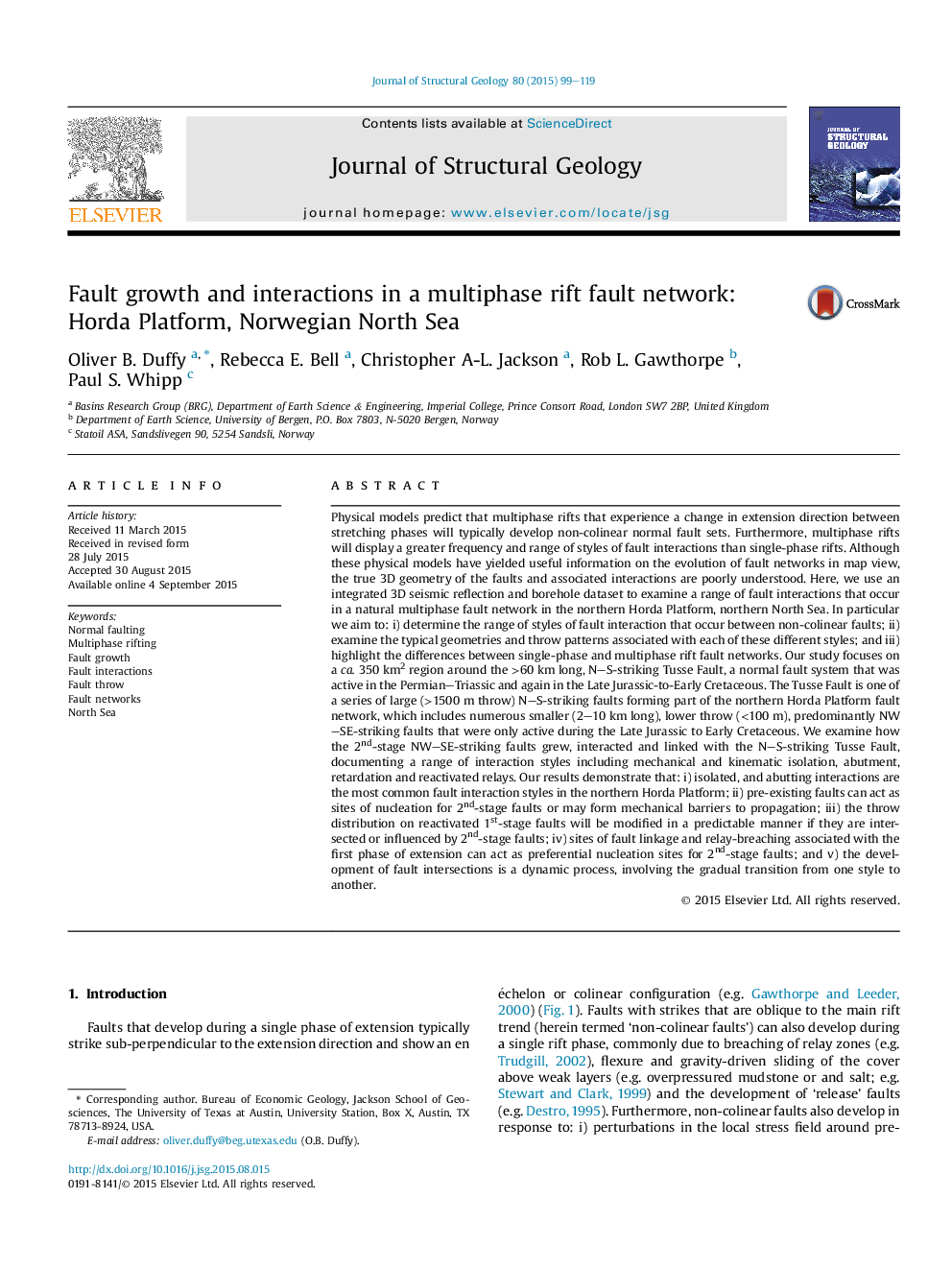| کد مقاله | کد نشریه | سال انتشار | مقاله انگلیسی | نسخه تمام متن |
|---|---|---|---|---|
| 6444767 | 1640500 | 2015 | 21 صفحه PDF | دانلود رایگان |
عنوان انگلیسی مقاله ISI
Fault growth and interactions in a multiphase rift fault network: Horda Platform, Norwegian North Sea
ترجمه فارسی عنوان
رشد گسل و تعاملات در یک شبکه گسل چند فاز تقسیم: هوردا پلت فرم، دریای شمال نروژ
دانلود مقاله + سفارش ترجمه
دانلود مقاله ISI انگلیسی
رایگان برای ایرانیان
کلمات کلیدی
گسل عادی، چند فاز رفته، رشد گسل، تعاملات گسسته، گسل پرتاب، شبکه های گسیختگی دریای شمال،
موضوعات مرتبط
مهندسی و علوم پایه
علوم زمین و سیارات
زمین شناسی
چکیده انگلیسی
Physical models predict that multiphase rifts that experience a change in extension direction between stretching phases will typically develop non-colinear normal fault sets. Furthermore, multiphase rifts will display a greater frequency and range of styles of fault interactions than single-phase rifts. Although these physical models have yielded useful information on the evolution of fault networks in map view, the true 3D geometry of the faults and associated interactions are poorly understood. Here, we use an integrated 3D seismic reflection and borehole dataset to examine a range of fault interactions that occur in a natural multiphase fault network in the northern Horda Platform, northern North Sea. In particular we aim to: i) determine the range of styles of fault interaction that occur between non-colinear faults; ii) examine the typical geometries and throw patterns associated with each of these different styles; and iii) highlight the differences between single-phase and multiphase rift fault networks. Our study focuses on a ca. 350Â km2 region around the >60Â km long, N-S-striking Tusse Fault, a normal fault system that was active in the Permian-Triassic and again in the Late Jurassic-to-Early Cretaceous. The Tusse Fault is one of a series of large (>1500Â m throw) N-S-striking faults forming part of the northern Horda Platform fault network, which includes numerous smaller (2-10Â km long), lower throw (<100Â m), predominantly NW-SE-striking faults that were only active during the Late Jurassic to Early Cretaceous. We examine how the 2nd-stage NW-SE-striking faults grew, interacted and linked with the N-S-striking Tusse Fault, documenting a range of interaction styles including mechanical and kinematic isolation, abutment, retardation and reactivated relays. Our results demonstrate that: i) isolated, and abutting interactions are the most common fault interaction styles in the northern Horda Platform; ii) pre-existing faults can act as sites of nucleation for 2nd-stage faults or may form mechanical barriers to propagation; iii) the throw distribution on reactivated 1st-stage faults will be modified in a predictable manner if they are intersected or influenced by 2nd-stage faults; iv) sites of fault linkage and relay-breaching associated with the first phase of extension can act as preferential nucleation sites for 2nd-stage faults; and v) the development of fault intersections is a dynamic process, involving the gradual transition from one style to another.
ناشر
Database: Elsevier - ScienceDirect (ساینس دایرکت)
Journal: Journal of Structural Geology - Volume 80, November 2015, Pages 99-119
Journal: Journal of Structural Geology - Volume 80, November 2015, Pages 99-119
نویسندگان
Oliver B. Duffy, Rebecca E. Bell, Christopher A.-L. Jackson, Rob L. Gawthorpe, Paul S. Whipp,
